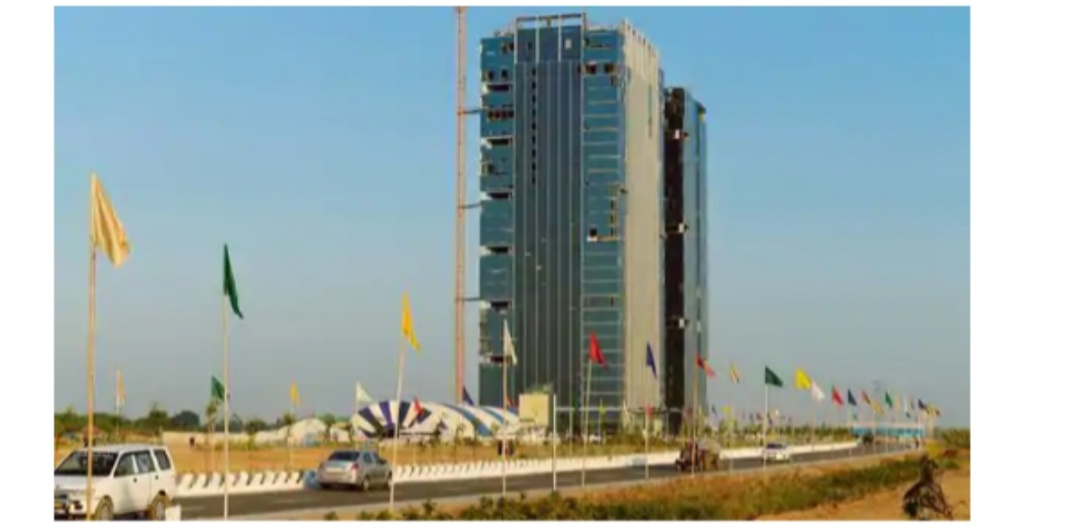Despite the daunting numbers of fiscal deficit reaching to 9.5% in 2020-2021, Finance Minister has managed to keep everyone happy. From a Central university in Leh to multi-purpose seaweed park in tamil-nadu, from four Indian astronauts being trained for Generic Space Flight aspects to 4000 cr of deep ocean mission; this budget has made promises to everyone. The Budget is segregated into six pillars primarilarily focusing on health, wealth and prosperity.

In terms of health, the government is committed to spend 64180 crores over six years. under PM AtmaNirbhar Swasth Bharat Yojna, this fund is allocated towards supporting rural and urban health centres, setting up critical care hospital, public health lab and various other necessities. Government will be spending 3500 cr on Covid-19 vaccine. Under the drive of Swachh bharat, swasth bharat Yojna some initiative has been shown to tackle the problems of water and air pollution.
In terms of wealth creation, the budget has made some ambitious proposals. One of them is Vehicle Scrapping Policy. As the name suggests, vehicles that are unfit and old will be phased out via fitness tests in automated fitness centers after 20 years in case of personal vehicles, and after 15 years in case of commercial vehicles. This will lead to value creation in two industries i.e a) scrap industry and b) auto-mobile industries. Consequently, it will bring down air pollution to some extent.

In order to achieve 5 trillion USD economy and become an integral part of global supply chains, possess core competence and cutting-edge technology, AtmaNirbhar Bharat – Production Linked Incentive scheme (PLI) has been announced for 13 sectors. Under Mega Investment Textiles Parks (MITRA) scheme, the government will establish 7 mega textile parks in three years. It is a better than outdated old SITP scheme (launched in year 2005) in which a total of 59 textile parks have been sanctioned by the textiles ministry and out of which only 22 textile parks have been completed. Another remarkable scheme launched in year 2019 is National Infrastructure Pipeline (NIP). NIP aims to improve project preparation and entice investment in projects. NIP focuses on social & public infrastructure, Logistics, water & Sanitation, Energy, Communication and transport. In 2019, 6850 projects were assigned and this year it has increased up to 7400 out of which 217 projects have already been completed.
These initiatives will upscale various sectors, promote employment and nurture the economy. To boost employment generation and improve connectivity within the country and in turn bring rise to trade activities, construction of many national highway projects majorly in the states of Tamil Nadu, Kerala, West Bengal and Assam will be taken up. The FM has further promised to construct dedicated freight corridors in eastern and western region for rail transports. Waterways and Power were other sectors that will get funding from the central government.
In the budget, capital expenditure have seen and will keep on witnessing sharp surge, so to instill more funding and proper financing of long term debt; Development financial Institution will be established. Furthermore, to generate funds for infrastructure development, Debt Financing of InVITs and REITs by Foreign Portfolio Investors will be enabled by making suitable amendments in the relevant legislations. The fund will also be pooled via monetizing operating public infrastructure assets. Assets like airports, dedicated freight corridors, operational toll roads, etc will be monetized.

Besides infrastructural development, the budget dives into financial Capital for wealth creation. The Central aims to develop a world class Fin-tech hub at GIFT (Gujarat International finance Tec city). Measures will be taken to bring confidence amongst the corporate bond Market. Government will notify SEBI to act as the regulator of gold exchanges of India. Another bold step taken by government is taking the decision of increasing the permissible limit of FDI from 49% to 74% in insurance companies. Moreover, initiation has been taken to clear country’s NPAs. An Asset Reconstruction Company Limited and Asset Management Company would be set up to consolidate and take over the existing stressed debt and then manage and dispose of the assets to Alternate Investment Funds and other potential investors for eventual value realization.
For wealth creation, above are the major initiatives that will be taken in the coming years and are applauded by the media. Apart from this, the budget has sighted upcoming initiatives for the welfare of the country. Ease of doing business will be promoted for multi-state co-operatives, Reforms that benefits One person companies has been stated which will directly ensure prosperity in start-ups. In agricultural sector, the ‘operation green scheme’ currently applicable to 3 perishable products will be extended to 22 perishable products. The budget Enhances the allocation to the Rural Infrastructure Development Fund from 30,000 cr to 40,000 cr and another 5000 cr has been allocated to The Micro Irrigation Fund, under NABARD.
For migrant workers, the One Nation One Ration Card scheme through which beneficiaries can claim their rations anywhere in the country. In this scheme – those staying away from their families can partially claim their ration where they are stationed. A portal will be launched which will collect relevant information on gig, building, and construction-workers among others. In addition, social security benefits covered by Employees State Insurance Corporation will be extended to gig and platform workers.

The government has ensured that it will promote transparency and ease in compliance for some segments. The central government has attempted to stimulate the economy by bringing changes in custom duty and direct and indirect taxes. Due to which opportunities of foreign investments will be seamless. The budget has done fair for itself given the conditions that economy has faced previous year. Aim of the government is to reduce the fiscal deficit for next year to 6.8% and by 2025-26, 4.5% of GDP. So far, India has fought well against covid-19, the question is will it sustain and nurture the economy and at the same time push it to new heights?
Written by- Priyanshi Shah
Literary and pictorial Sources:- Union Budget and Mint.
